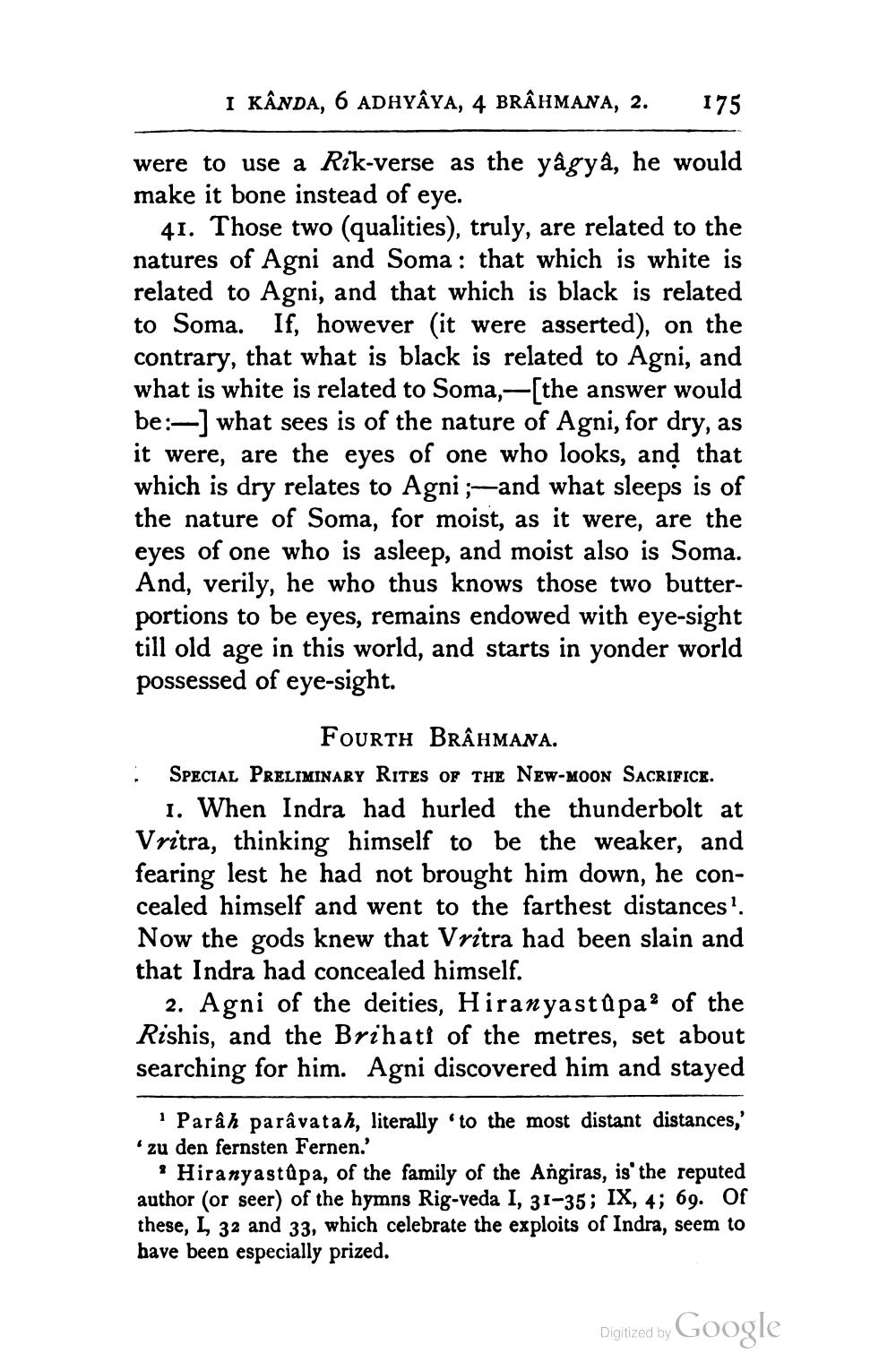________________
I KÂNDA, 6 ADHYAYA, 4 BRÂHMANA, 2.
175
were to use a Rik-verse as the yâgya, he would make it bone instead of eye.
41. Those two (qualities), truly, are related to the natures of Agni and Soma : that which is white is related to Agni, and that which is black is related to Soma. If, however (it were asserted), on the contrary, that what is black is related to Agni, and what is white is related to Soma,—[the answer would be:-) what sees is of the nature of Agni, for dry, as it were, are the eyes of one who looks, and that which is dry relates to Agni ;—and what sleeps is of the nature of Soma, for moist, as it were, are the eyes of one who is asleep, and moist also is Soma. And, verily, he who thus knows those two butterportions to be eyes, remains endowed with eye-sight till old age in this world, and starts in yonder world possessed of eye-sight.
FOURTH BRÂHMANA. : SPECIAL PRELIMINARY Rites of the New-MOON SACRIFICE.
1. When Indra had hurled the thunderbolt at Vritra, thinking himself to be the weaker, and fearing lest he had not brought him down, he concealed himself and went to the farthest distances ?. Now the gods knew that Vritra had been slain and that Indra had concealed himself.
2. Agni of the deities, Hiranyastů pa? of the Rishis, and the Brihati of the metres, set about searching for him. Agni discovered him and stayed
* Parâh parâvatah, literally to the most distant distances,' zu den fernsten Fernen.'
· Hiranyastûpa, of the family of the Angiras, is'the reputed author (or seer) of the hymns Rig-veda I, 31-35; IX, 4; 69. Of these, L, 32 and 33, which celebrate the exploits of Indra, seem to have been especially prized.
Digitized by Google




